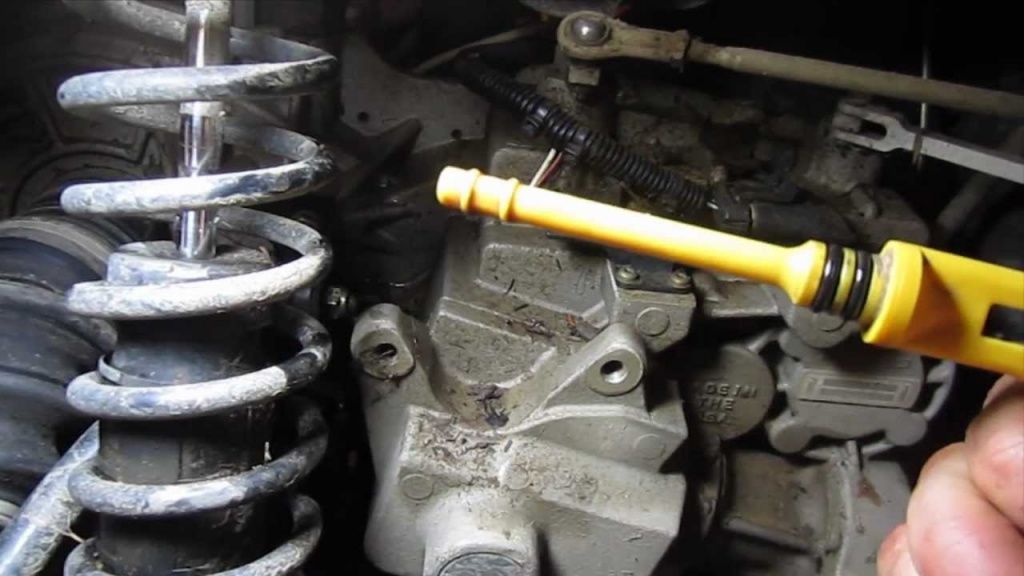How to Change ATV / UTV Transmission Fluid
Enough, fresh transmission oil is crucial to the proper functioning of your off-road vehicle. This post will tell you how often you need change ATV and UTV transmission fluid and how to go about doing it, if you want to do-it-yourself.
Why is it Important to Change ATV / UTV Transmission Oil?
Transmission oil keeps your transmission system at an effective operating temperature and protects it from failure. The Automatic Transmission Rebuilders Association has reported that 90% of all transmission failures come from overheating, most of which come from old fluid.
Also, when you change your oil yourself or take your ATV to the mechanic to have the oil changed, you may discover leaks before they have time to cause much problem.
Some of the problems that old or low transmission oil can cause impact your control over the vehicle. Even before you overheat your transmission, you may find yourself in a dangerous position on the trail.
How Often Should You Change Transmission Oil?
Most of the time, the transmission fluid needs to be changed every 30,000 miles. The owner's manual doesn't say that, but this is one case where you may be better not to listen to them. Waiting too long risks transmission overheating and changing it sooner causes no harm.
With some oils, like Dexron III ATF, it is safe to wait until 100,000 miles. You'll have to check the specifics of your oil.

Signs Your Transmission Oil Should Be Replaced
Maybe you followed the manual's advice or simply forgot, or maybe you have a leak, either way the following symptoms tell you that your ATV or UTV needs a transmission oil change.
Your oil looks or smells funny
If you check your transmission oil, notice how much fluid you have, what color it is, and if it has a smell. Bright red oil or oil that has a burnt smell is an indicator that its need prompt changing.
Squealing and grinding
Squealing or grinding noises always need to be looked into. If they're coming from your transmission or you notice the noise when you're shifting, it is probably your transmission oil.
Difficult shifting
On a manual transmission machine, you may have difficulty switching gears.
On an automatic transmission machine, you may notice it struggles to shift or that is shifts sooner or later than it should.
Slipping out of gear
Your machine may slip out of gear without warning as low or corrupt oil impacts the pressure that keeps gears in the position.
Delayed response after shifting gears
If you notice any delay after shifting gears, it could be because of dirty transmission oil.
Surging
When you get ready to use the brake or accelerator, you may notice the vehicle surges backwards or forwards.
Step-by-step Instructions for Replacing ATV / UTV Transmission Oil
Fluid type
You'll need to know the type of fluid your machine needs, because using the wrong type of oil can cause shifting issues. The owner's manual will tell you the type of oil you need. The fluid type should also be printed on the transmission fluid dipstick.
Changing transmission oil
Things you'll need:
- new oil
- a large catch pan
- a new filter
- a new pan gasket
- a wrench
- a long-neck funnel with built-in screen
There is no drain plug, so you have to remove the pan from the bottom of the transmission. As soon as you start removing the pan, oil will come out in a fairly large area, so you'll need a large catch pan on the floor/ground, centered under the transmission.
Clean the pan of all old oil, clean the mounting flange, and remove the old gasket from the seal. The gasket will probably have come apart and require some scraping to take care of all the remnants.
Install the new filter in the same position as it was. If there were any O-rings, reinstall those.
Install the new gasket.
All the bolts involved in the above steps will need to be tightened to manufacturer's specifications in your owner's manual.
Use the long-neck funnel with screen to refill the transmission with fluid without getting any dirt, debris, or other foreign nasties in the dipstick tube.
Add half a quart of oil at a time so you have optimal control over the stream.
Make sure to not overfill the transmission. Too little is bad, but too much is bad too, potentially causing leaks, erratic shifting, oil starvation because the fluid will be foam-y instead of oily, and transmission damage.
Stop filling when the dipstick indicates the oil is full. Unfortunately, that doesn't really mean it is full though. You'll need close the oil cap, start the engine, and drive around a few minutes. When you're back in the garage, idle the engine and recheck the oil. Add fluid a little at a time until the dipstick reads full again.







































